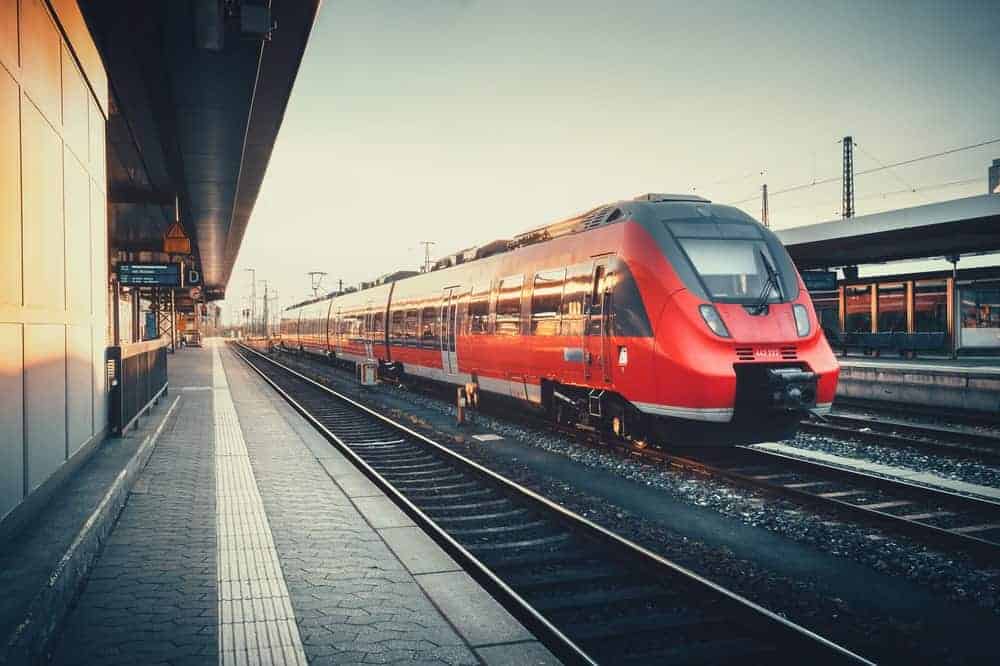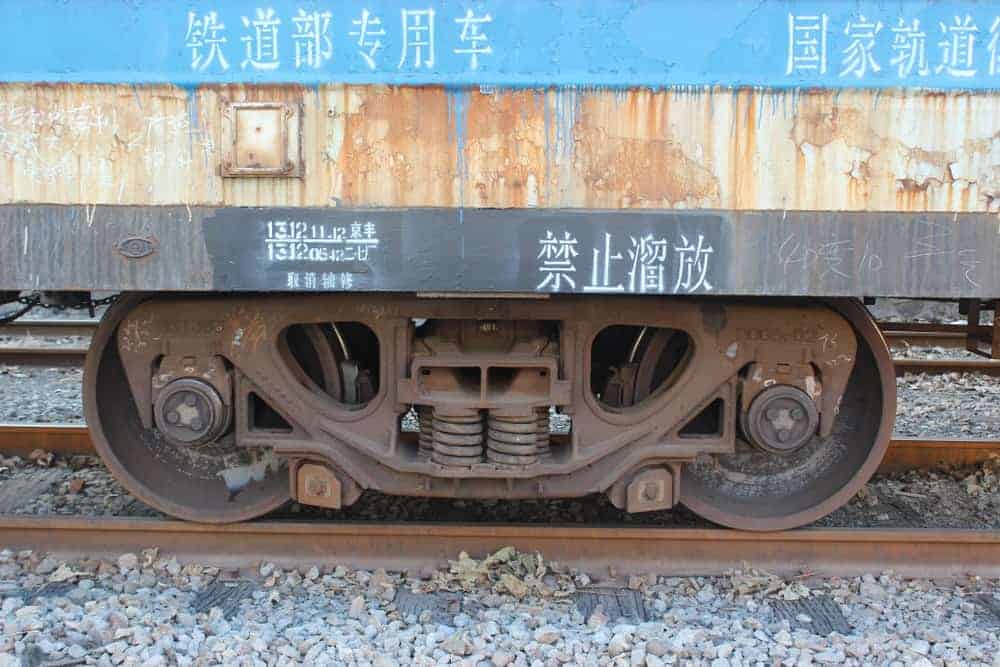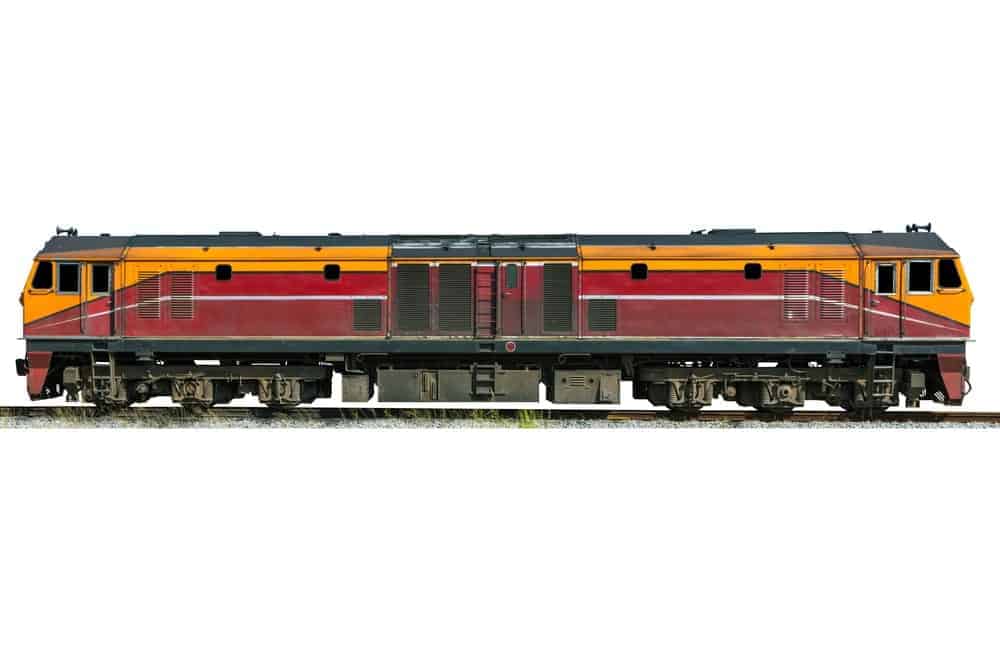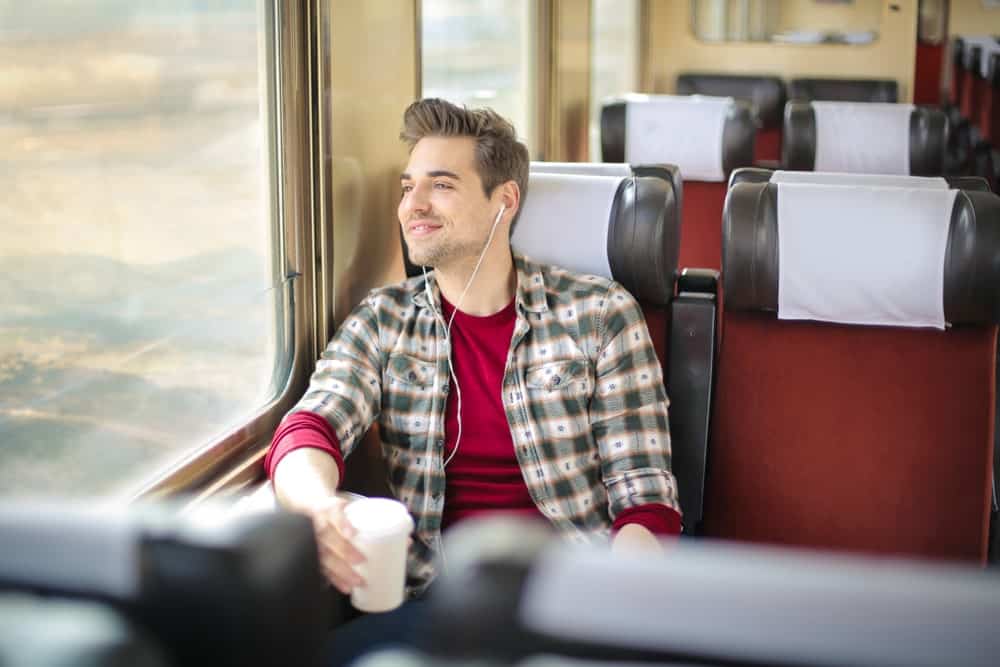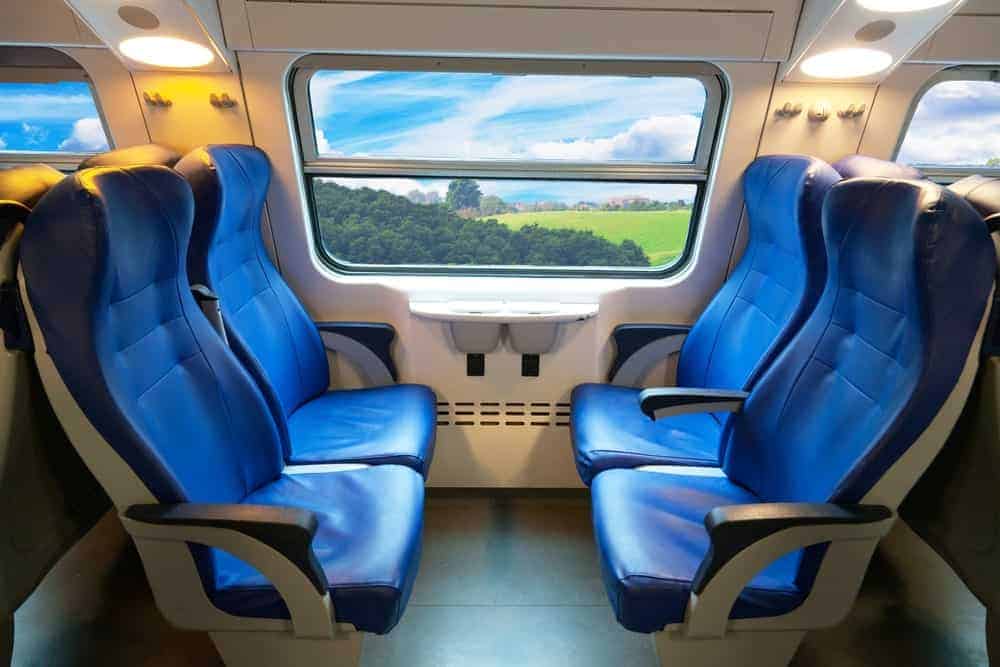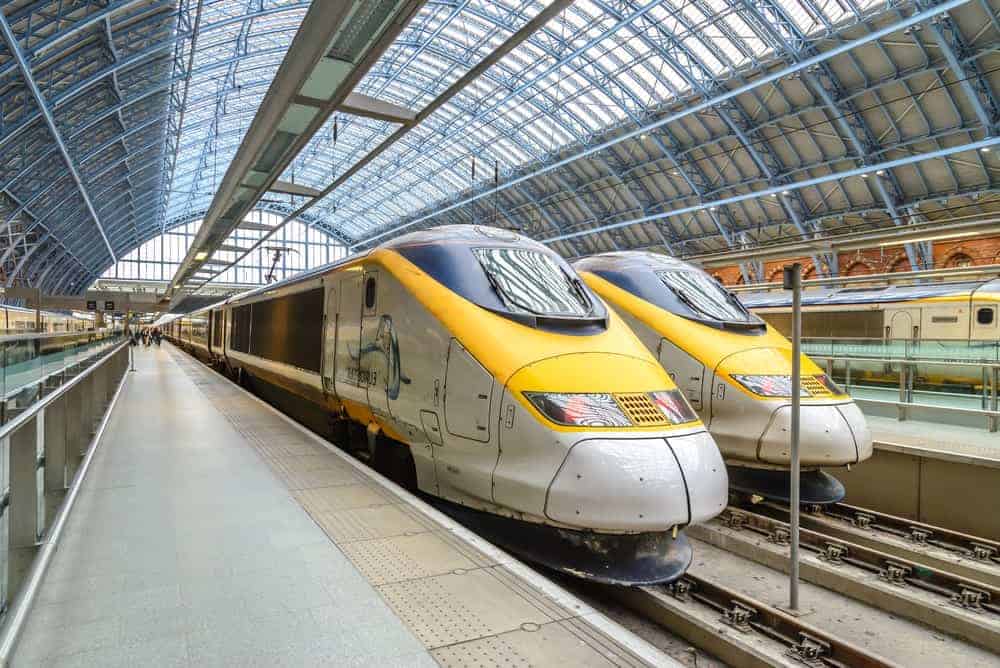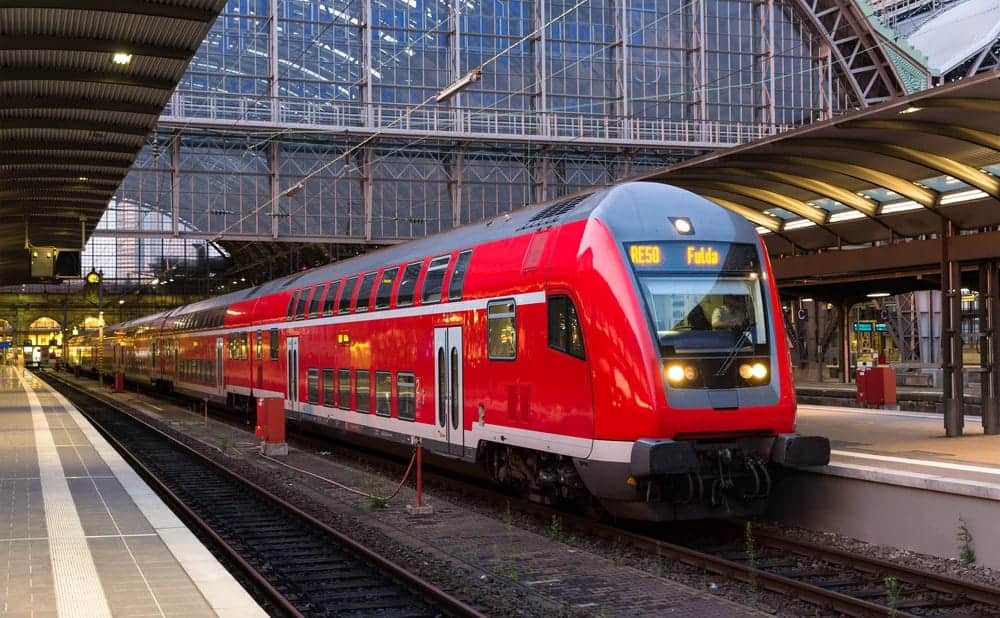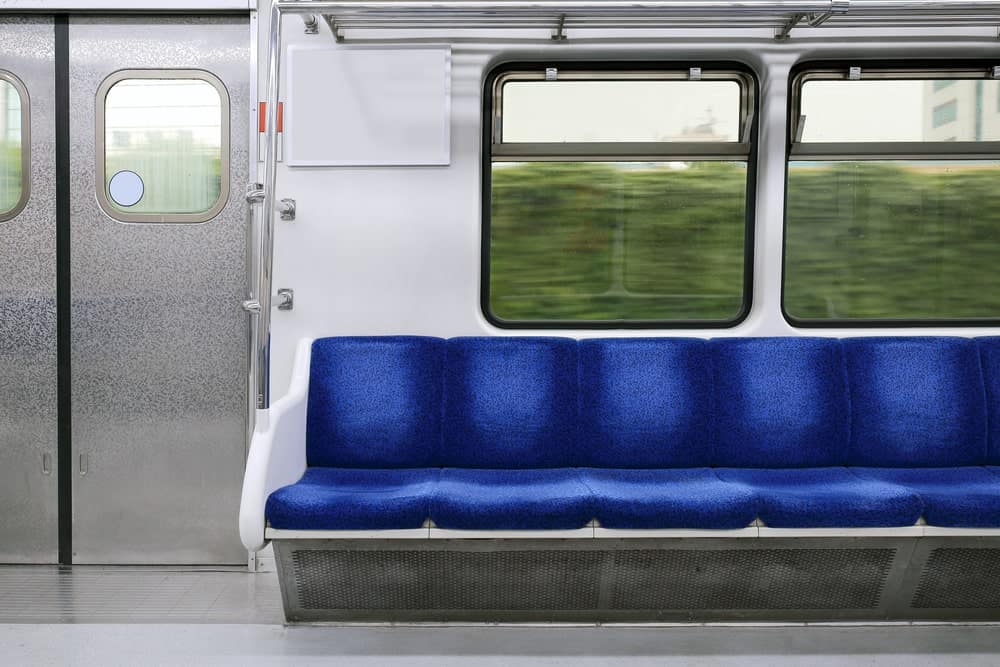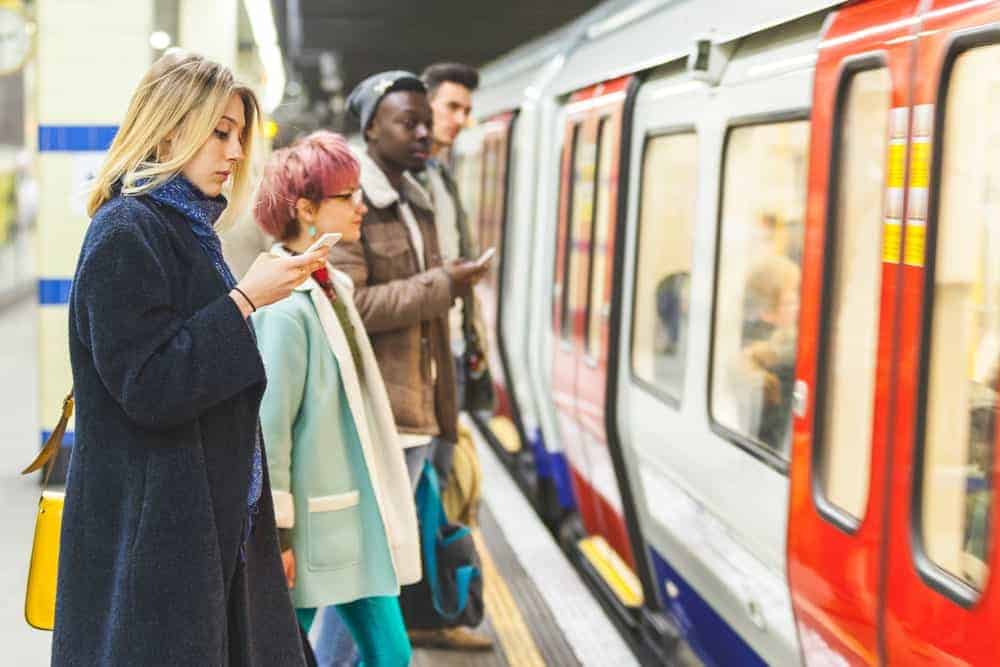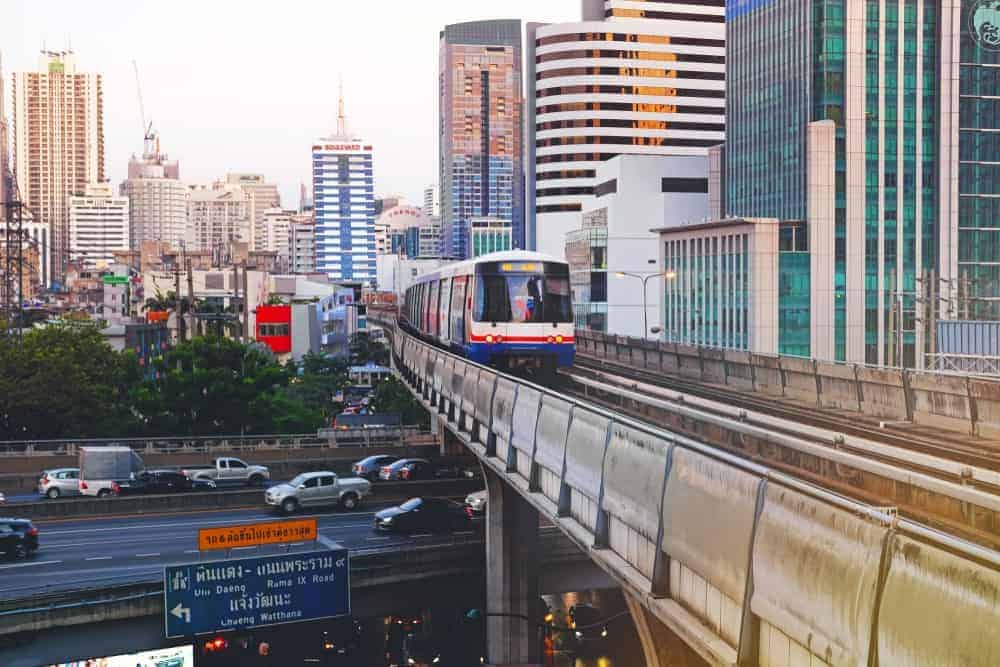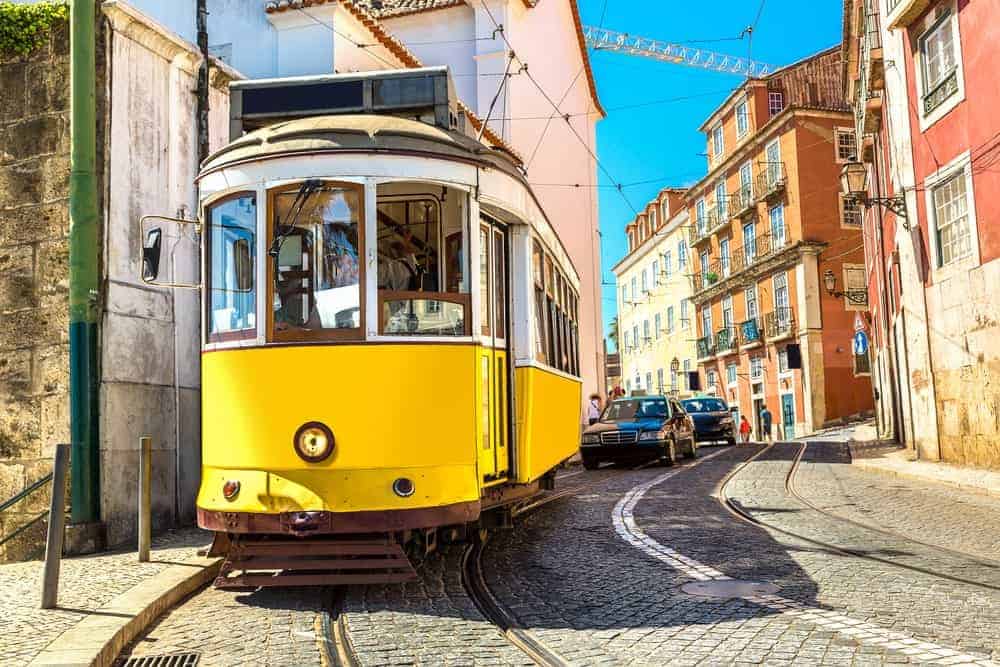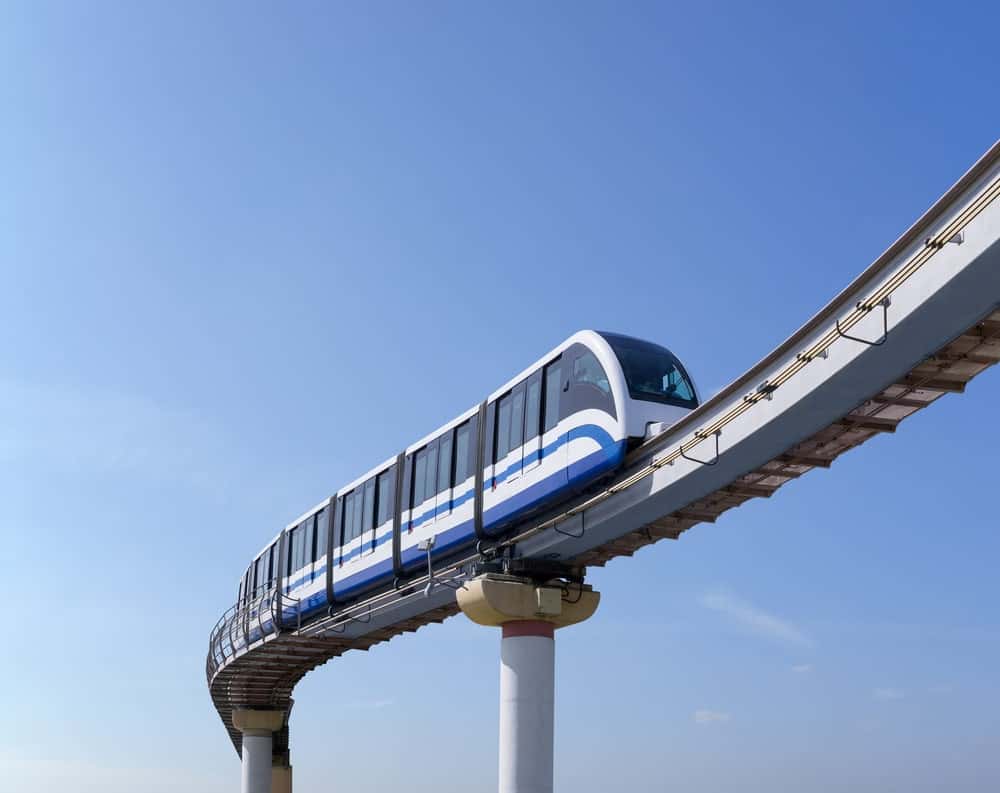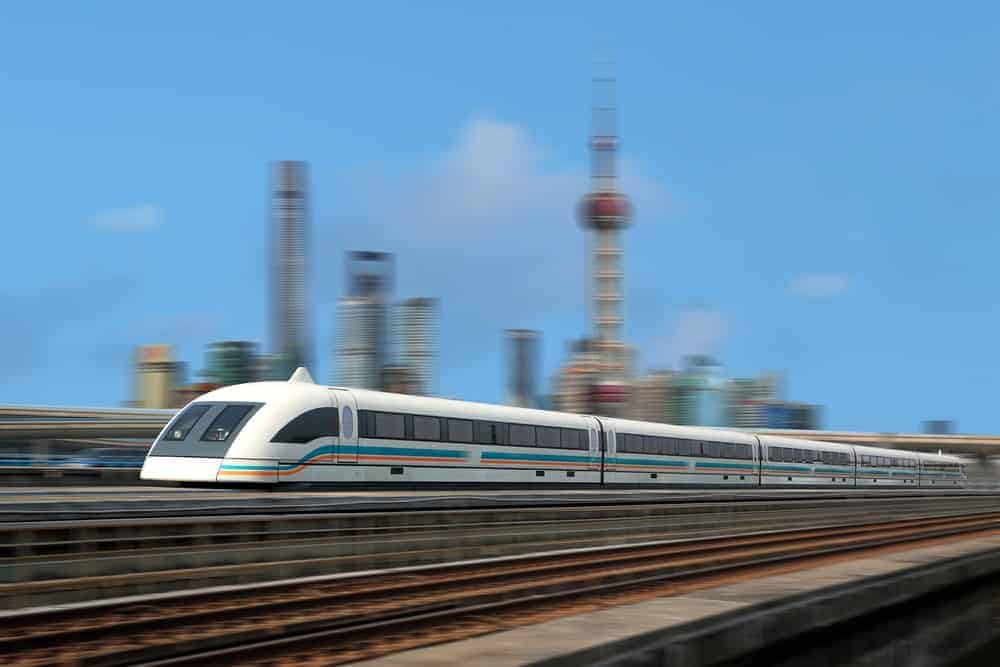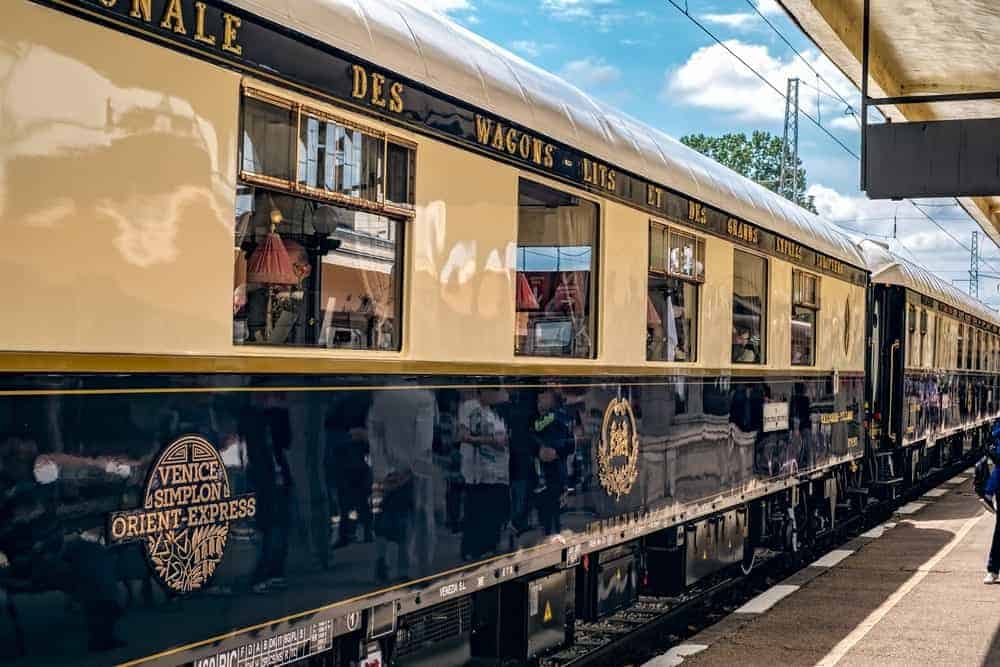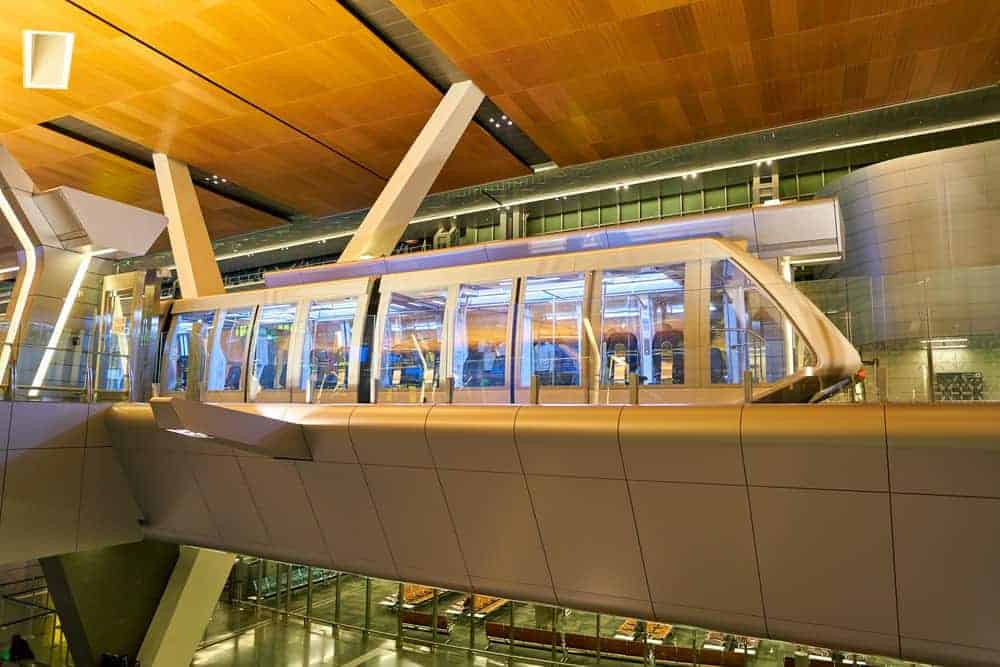Trains are transport systems that have a series of connected vehicles that run along a track. The main purpose of trains is to transport passengers or cargo. The word ‘train’ comes from the Latin word ‘trahere’ meaning ‘to pull.’ Train tracks are usually made of two running rails which can also be supplemented by additional rails.
There are many different types of trains that you may come across during your travels. Some types of trains have been listed below.
Type of Train Design
There are two main categories of how trains are built: bogies and locomotive. Bogies were really popular before the 19th century and are still used in some parts of the world as a tourist attraction. Nowadays, most train systems are based on locomotive travel since it is more efficient.
Bogies
Bogies are wheeled trolley or wagons that were traditionally used to transport cargo. Bogies are the framework that carries the wheels that are attached to the train itself. Bogie train compartments can be fixed in place or mounted to another locomotive or wagon. Most bogies are made with two axles since that is the simplest design but the design needs to be customized for heavier loads and cargo.
Locomotive Trains
Historically, trains used to be gravity-powered or hauled by horses and ropes. In the 19th century, the steam locomotive was invented and then replaced for electric or diesel versions. They became popular since they required less labor; however, they were more expensive and complex. These trains became the most popular medium for the transportation of passengers.
Types of Trains
The design of a train is mostly dependent on the main purpose of the train. For example, if the train is meant for short distance commute, it won’t have sleeper or dining cars built-in. There are many different types of trains throughout the world that form an integral part of the transport system.
Passenger Trains
Passenger trains can be fast and are often really long so that they can carry more passengers. They may have a self-powered unit or a combination of locomotives. These trains travel between depots or stations, where passengers can disembark or board. They usually have a fixed schedule, which is why they often have superior track occupancy rights over other trains like freight. There are three main types of passenger trains: long-distance, short-distance, and trains within cities.
Long-Distance Trains
Long-distance trains are built for travels between different cities or a region of a country. They even cross through several countries at times. They usually have a restaurant or dining car so that passengers can have a pleasant meal during the course of their journey. Trains that travel overnight also have sleeping cars so that passengers can rest during the travel. Distances over 500 miles are usually reserved for air travel, but trains are a cheap and popular way to travel long distances in many countries. There are many different types of long-distance trains around the world.
High-Speed Rail
The high-speed rail is built for long-distance travel since it can get passengers to their destination quicker. Generally, high-speed trains run at speeds above 200 km/h. Their dedicated tracks are designed to accommodate such high speeds without the risk of fire from friction. The high-speed train is reduced time and money costs.
The first successful high-speed passenger railway system was Japan’s Shinkansen in 1964. This train was popularly known as the bullet train. In modern times, the fastest passenger trains in the world are the Wuhan–Guangzhou High-Speed Railway system and Beijing–Tianjin Intercity Rail. They have been known to reach speeds of 350 km/h.
They are also far more environmentally friendly than airplanes. They can carry more passengers and also use less fuel. They reduce the time costs of airport boarding, check-in, takeoff, and disembarking.
Inter-City Trains
Inter-city trains are generally long-distance trains that connect metropolitan areas in a country. The distances they cover are usually comparable to airline flights but they still move at highway speeds. They may provide some amenities like sleeper cars or dining options.
Inter-city railways may sometimes provide international services as well. This is really popular in Europe where travel is more open and around 50 countries are in close proximity. Main examples of such trains are the EuroCity and Eurostar, which people use as a comfortable option to travel long distances.
Regional Trains
Regional railways connect stops between nearby cities. They make more stops over a shorter distance than inter-city trains, but travel longer distances than commuter trains. They operate beyond just urban areas and often connect the cities to rural regions of the country.
Short-Distance Trains
Short-distance trains are designed to carry more passengers. Their seating systems are often more packed and can even have space for people to travel while standing. The objective of these trains is to mass-transport people over short distances. This makes them more eco-friendly than cars and they also reduce the burden on the roads.
Commuter Trains
They connect suburban areas with the center of the city. The main purpose of the regional train is to take passengers to and from work. These trains are usually scheduled for rush hours and weekdays. They only travel to peak directions to save fuel costs. Regional railways have more stops over shorter distances. In the US, commuter trains are usually locomotive trains while regional trains in Europe typically have multiple electric units.
Commuter trains are an efficient mode of transport that reduces the burden from road traffic. They carry people through smaller surface area and reduced air pollution. Some carriages of commuter trains are built with more standing space than seats. They even facilitate wheelchairs, cycles, and prams.
Cities can also become too dependent on commuter trains. In such cases, commuter trains can face extreme congestion. For example, the 29 stations of the Yamanote Line in Tokyo, Japan, carry 3.5 million passengers daily. In New York, the subway system is responsible for 5.7 million passengers across 472 stations. Due to this reason, many modern trains come with foldable seats so that there is more space to stand during rush hour. To decrease boarding and disembarking time, trains even come with doors on both sides. Double Decker trains are also become more popular to cope with the passengers.
Within City Trains
There are over 31 cities in the world that are home to over 10 million people. This creates the need for many mass-transit systems across the city. Different types of transport are needed to handle the hustle and bustle of cities on a daily basis. Without such transport systems, cities can often choke from the amount of traffic.
Rapid Transit Trains
Large cities often rely on a metro system. These systems can also be called tubes, subway, or underground rails. They are usually powered by electricity coursing through a unique third rail. The railroads are separate from other traffic like underground tunnels in the city’s center or on elevated overhead structures in the suburbs. They are designed to decelerate and accelerate faster than long-distance trains which are much heavier.
Tram
In the UK, there is a set distinction between a railway and a tramway under the law. In the United States and Canada, similar trains are referred to as streetcars or trolleys. The main difference between a railroad and a tramway system is actually that trams mostly run on public streets while trains have a separate path from public roads.
Light Rail
Light rails are often referred to as the modern tram systems but they usually have their own separate paths similar to heavy-line railways. They are a mixture of a tram and a train. Unlike subway trains, light rails may even have level crossings, which are often protected with crossing gates. In some underdevelopment sites and deprived areas, abandoned heavy rails are often used as modern light rails to connect the areas with larger cities.
Monorail
A monorail is a railway system which has a single track of a beam or rail. They were developed to meet the medium demands of traffic in urban areas and typically run on elevated rail tracks. Almost all monorails are designed with linear induction motors. The term mono (one) and rail originated in 1896 when Eugen Langen named elevated railways systems the Eugen Langen One-railed Suspension Tramway.
Maglev
Maglev is a word derived from ‘magnetic levitation’. It is a transport system that uses two sets of magnets to push the train off the track. Another magnet is used to move the floating train ahead at great speeds since there is no friction that needs to be accounted for. They don’t travel too far but still give high-speed rails and airplane favorable competition.
Maglev technology-based trains have no real moving parts. The only moving part is the train which travels along a specific guide-way through magnets to control the speed and stability of the train. They are smoother and quieter than heavy-duty conventional trains due to this very reason. They can also decelerate and accelerate much quicker than normal trains.
However, maglev train systems are really expensive to construct and also use a lot of energy to remove drag and friction. They are also not that comfortable or safe for passengers. They are only in operation in three countries: China, South Korea, and Japan. This is due to the fact that the benefits of these trains don’t overcome cost and risk they pose.
Railcar
The railcar is a self-propelled railway transportation system that moves passengers towards their destinations. Railcars are often used to refer to a single car, coach or carriage with a driver’s cabin at both ends of the vehicle. These vehicles are also capable of hauling train carriages; in technical rail usage, they are often referred to as motor cars or railmotor coaches.
Named Trains
Railway companies often give their name a specific name as a marketing strategy. This increases the profile of the service and even attracts more passengers. Usually, the most prestigious trains are given names like high-speed express trains that travel between cities. Some of the most famous trains include the Flying Scotsman, the Deccan Queen, the Royal Scot, and Orient Express; the latter has also been featured in many films including the Murder on the Orient Express.
Automated People Mover (APM) Trains
The Automated People Mover (APM) is a small scale guide-way transit system used in small areas like airports, theme parks, downtown districts, or under the Capitol Building. They can utilize different technologies like a monorail, duorail, or maglev.
Some APMs are smaller vehicles that work on off-line stations to move passengers quickly over small areas non-stop. Larger vehicles can carry 20 to 40 people.
Freight Trains
Freight trains are also referred to as goods trains since they transport materials or cargo. They are not designed to carry passengers at all. Most of the world’s freight is transport by such trains and they are essential to the industry. In many countries, the railway system is mostly used to transport goods rather than passengers including the United States.
Transporting freight by train can be really economical under the right circumstances. They are also an energy-efficient option than by road. They can carry a lot of bulk over large distances quicker than trucks and aren’t that suited to short-distance travel.
The biggest disadvantage to freight trains is the lack of flexibility since they can only go one specific route that the rails are built on. By road, you can reach more inaccessible and remote areas.
There are different types of freight trains used across the world. The most common type of modern freight rail is the intermodal train where huge containers can be lifted onto and off the train using cranes. This reduces the amount of time it would take to unload and load the train, making it a more cost-effective option. It also secures the materials and increases accountability.
In some regions, the piggyback train is also popular. The train is built in a way that trucks can drive on the train and drive off again once the destination is reached. They require no modification to the truck and are the easiest way to transport trucks without increasing the traffic on the roads. This system is the main types of transport used through the Channel Tunnel between France and England, as well as in the trans-Alpine service between Italy and France.
Trains are an essential part of the transport system in many ways. They are often the best mass-transit system and also help in trade.

